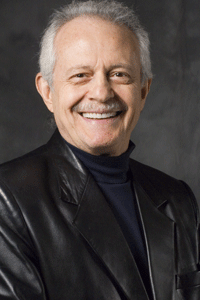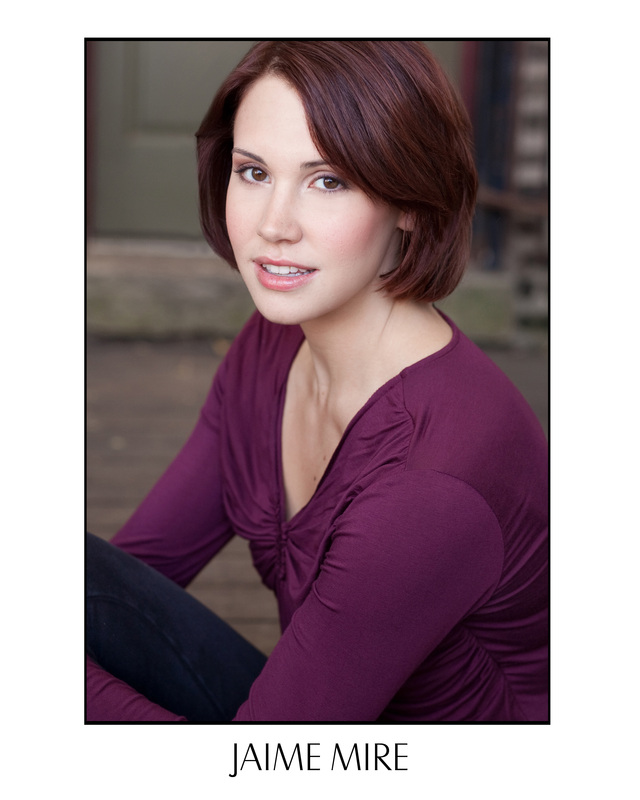 |
| Bob Bernhardt. Photo courtesy of The Louisville Orchestra. |
 |
| Jorge Mester. Photo courtesy of The Louisville Orchestra. |
The Louisville Orchestra:Fanfara
A review by Scott Dowd.
Entire contents are copyright © 2012 Scott Dowd. All rights reserved.
As I took my seat in the Grand Tier of Whitney Hall for last night’s Fanfara concert, I found myself scanning the stage for familiar faces. I’ve been attending performances for more than twenty years. I have also worked with and for the Louisville Orchestra off-and-on over those two decades and have come to know many of the musicians professionally and personally. It has been a difficult year for the musicians, and some familiar faces were missing. But, I was grateful to see the many who remain, including principal flautist Kathy Karr – more on her later.
Last evening was laden with event potential. That Mayor Greg Fischer personally recognized its importance from the Whitney Hall stage may in past years have seemed pro forma. Last night, however, this gesture carried a great deal of significance for a community that identifies so heavily with the arts. Not only was last evening the opening of the Louisville Orchestra’s seventy-fifth season, the beginning of principal pops conductor Bob Bernhardt’s fourth decade with the ensemble, and the resolution of a year-long fermata; it was also the christening of the newly renovated home of the organization. In past seasons, The Louisville Orchestra has performed its variety of series in multiple venues. This season all of them – Classics, Coffee, orKIDStra, NightLights, Pops, Wow! – will all take place in the space named for the founding conductor of the Louisville Orchestra, Robert S. Whitney.
For last night’s performance I was seated in the Grand Tier, traditionally a focal point for sound in that venue. Perhaps it was wishful thinking but to my ears the acoustics in Whitney Hall seemed vastly improved.
Music director Jorge Mester created a program for last night’s season opener designed to showcase the strengths of the orchestra and its musicians. In an unprecedented move, he invited principal pops conductor Bob Bernhardt to conduct the second portion of the concert, which also demonstrated the organization’s ability and willingness to supplement the core ensemble with quality musicians as necessary.
The evening began with Paul Hindemith’s Symphonic Metamorphosis, which he composed in 1943, three years after immigrating to the United States. In creating this piece, Hindemith anticipated a trend in the American music scene that was to be epitomized five years later by the Louisville Orchestra’s commissioning project. American Orchestras were looking for music by living composers that allowed them to stretch themselves artistically. The work highlights the talents of the orchestra’s individual sections, juxtaposing strings and winds, brass and percussion in a constant state of transition. Periodically members of the orchestra are lifted up individually or in small ensembles-within-the-ensemble. This is particularly true of the principal flute; Hindemith has written one of the most nefarious flute solos in the repertoire, beautifully performed last night by Kathy Karr. The musicians of the Louisville Orchestra are part of a long tradition of virtuosic interpretation of contemporary classical music and demonstrated last night that that elemental aspect of the ensemble’s personality remains strong in these musicians. The ensemble, individually and as a whole, was more than up to the challenge. But I do want to point out the contributions of two musicians often overlooked, but invaluable to the success of a work like this one: principal timpanist James Rago; and principal percussionist John Pedroja, whose faultless precision is exemplary.
In his choice of Mozart’s Piano Concerto No. 25 in C major, K. 503, music director Jorge Mester demonstrated again his canny ability to balance the various, sometimes opposing, aspects of presenting serious music to the public. With this concerto, Mozart subtly but dramatically adjusted the relationship between the soloist and the orchestra by establishing a partnership between the two. The requirements on pianist Jeremy Denk were undiminished by the composer; this concerto is, in fact, considered to be among Mozart’s most challenging. Denk obviously enjoyed challenge as he made an unassuming entrance on the heels of the string’s virtuosic introduction. Together Mester and Denk luxuriated in the music extending tempos without self-indulgence.
Bob Bernhardt was unusually quiet during the second half of the concert, leaving the patter to front man Steve Lippia. But at one point the emotion of the evening was apparently too much and the thirty-year L.O. veteran captured the feelings of everyone in the hall, typical boyish earnest, “I just have to say…this feels good!” His statement brought another round of applause, laughter and – I suspect – lumps to a few throats.
The orchestra swelled to seventy-seven members for the Pops portion of the evening that included two drum sets and a much-expanded horn section proved worthy enough to give it that beefy Las Vegas sound associated with Frank Sinatra and the Rat Pack. It costs a lot of money to rent charts – the musical arrangements. To keep expenses down, the L.O. had been relying heavily on their own library prior to the break. I suspect the rather tepid arrangement of Themes from West Side Story that opened the second half was an artistic concession. Still, Bernhardt and the musicians were able to wring out everything that score had to offer, and the audience responded with enthusiasm.
Steve Lippia is easy on stage. He knows how to bring the audience in and make them comfortable, even in a space as large as Whitney Hall. I’ve seen plenty of big name entertainers who shine in more intimate venues lose their edge in that space. Lippia is not an impressionist, but somehow he manages to evoke the spirit of great singers like Frank Sinatra, Nat King Cole, Bobby Darrin and Tony Bennett while maintaining his own artistic integrity. With every downbeat, Bernhardt elicited waves of anticipation from the audience as they prepared to receive another great American Standard and Lippia delivered over and over again with hits like “My Way,” “Mack the Knife,” What Kind of Fool am I?” and “Luck Be a Lady.” It was after eleven when the balloons signaled the end of the evening. But, for me, the evening was over much too quickly.
According to Dr. Mosley’s program notes, Mozart originally performed his twenty-fifth piano concerto in a Viennese casino. Putting this piece on a concert that includes a Las Vegas mainstay like Steve Lippia smacks of Jorge Mester’s impish sense of humor and underscores the fact that the organization’s future remains uncertain. The management, board and musicians are betting that Louisville audiences will embrace the orchestra once again and imbue the organization with the cultural relevance of the past. The ball is in play.
The Louisville Orchestra: Fanfara
September 8, 2012
Kentucky Center for the Arts
501 West Main Street
Louisville, KY 40202
502-584-7777




